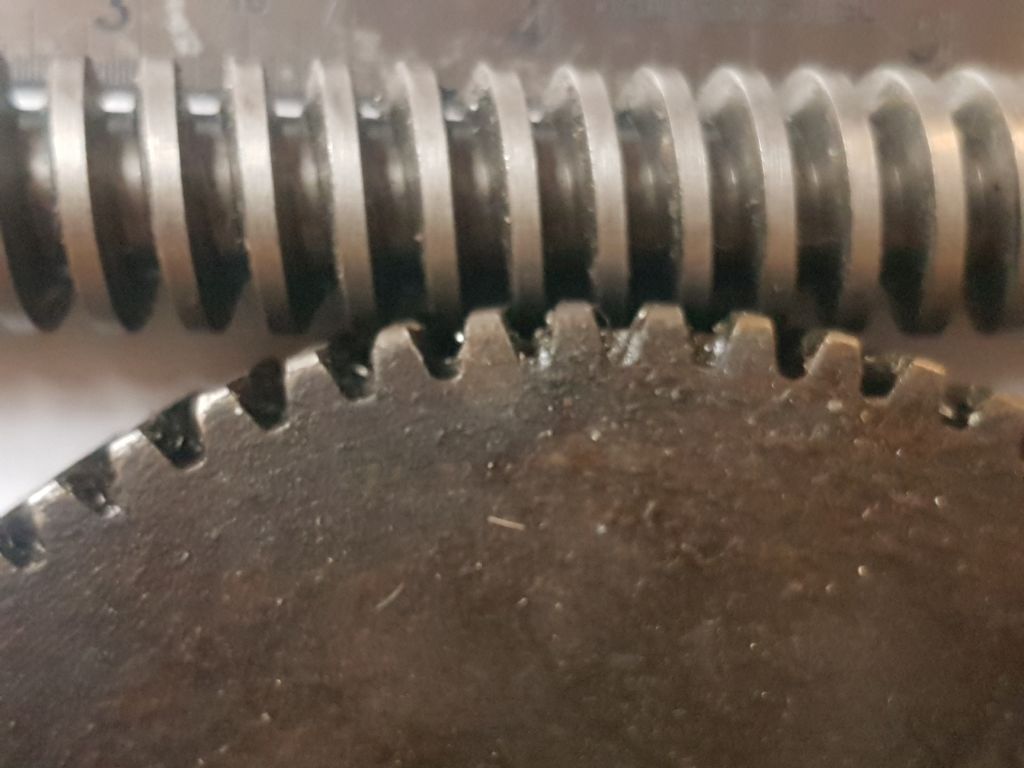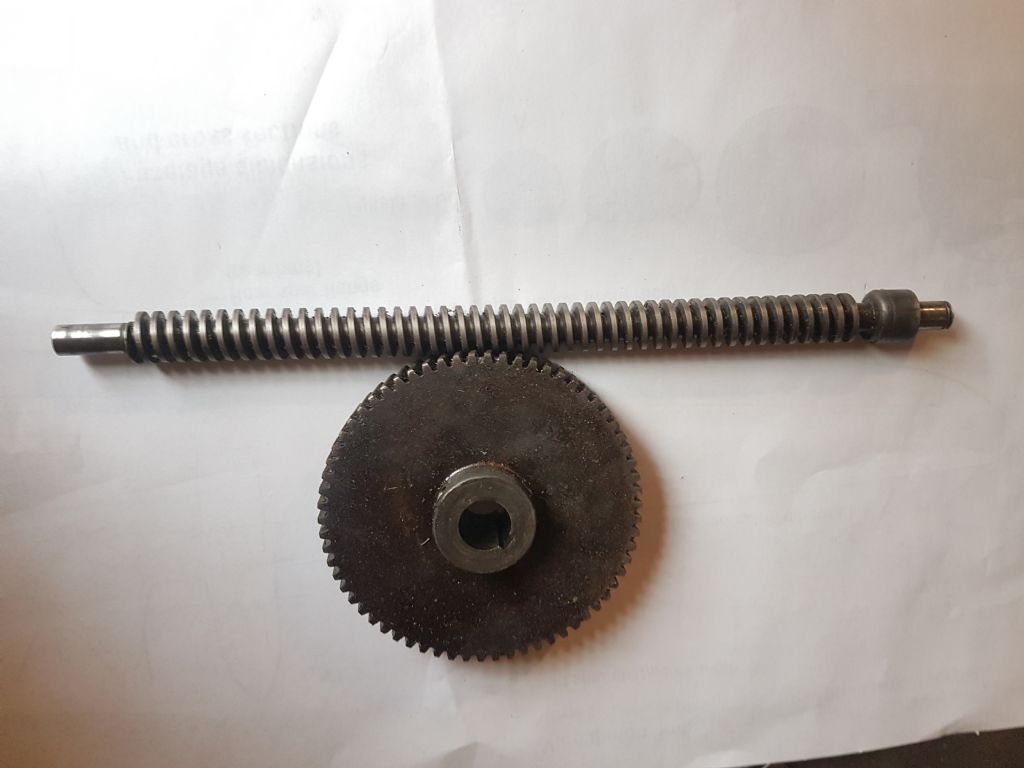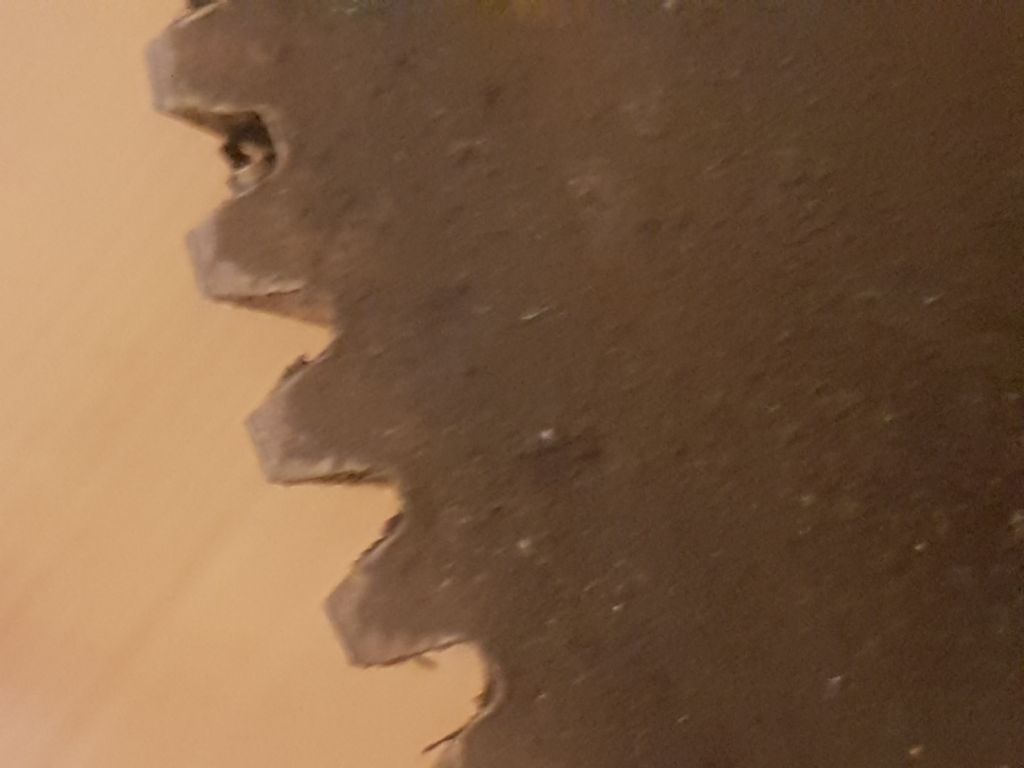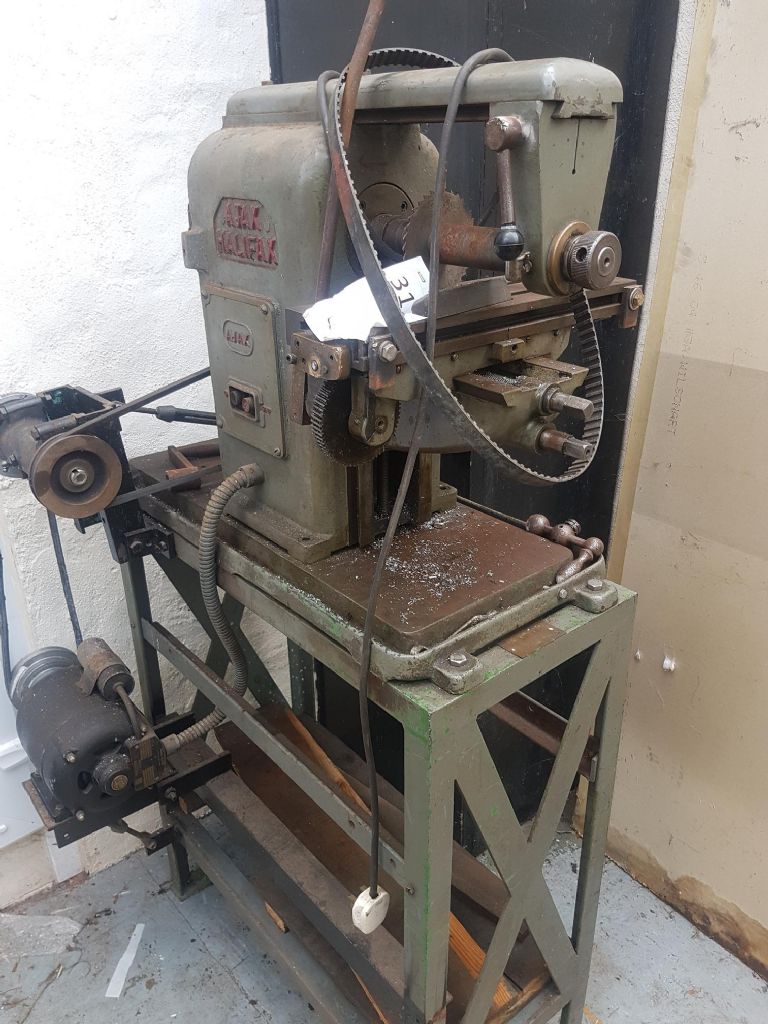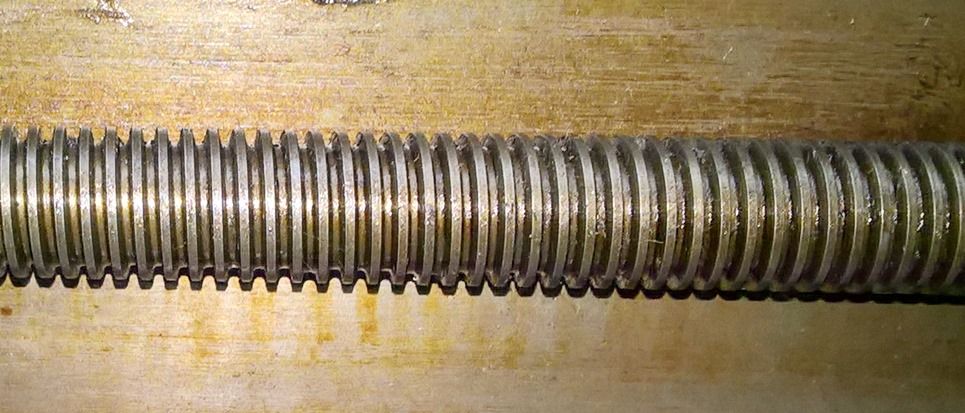No – don't try cutting a new screw with that great long, fancy-thread, high-lead!
Go with the extension-piece approach. It is transmitting only your hand-power, and there seems nothing wrong with the rest of the mechanism.
It's more than the technical problems of work and tool geometry, shown above.
Do you have a heavy-duty lathe actually designed to cope with such coarse threads, i.e. one having a 2 or at worst, 4 TPI lead-screw and change-wheels to match? Or the equipment for thread-milling?
Cutting a heavy thread coarser than the lead-screw, especially on a fairly light machine, is bad practice. It puts very unfair strains on the machine; even with the recommended "only if you really have to" practice of disconnecting the normal power drive and operating the lathe manually, "backwards" , from a handle on the lead-screw.
.
Use the method Hopper describes, though personally I'd not try welding or soldering, for such tasks. It can risk distorting the screw itself. If there is enough shaft projecting from the bearing you can alternatively use a tightly-fitting external sleeve, with pins. This is arguably stronger as you are not reducing the screw's cross-sectional area beyond perhaps a light skim for fit.
.
Following MadMike's suggestion, I would look at the bearing part carefully to establish if you need actually replace it. For preference, you need only trim it back or counterbore it a bit.
The deeper you go into modifying the machine to cope with repairing one part, the more awkward traps you risk having to dig yourself out of.
.
If you really need replace the whole caboodle, a limited range of such screw material is commercially available, but expensive! Most is Metric trapezoidal but I purchased a length of ACME stock from HPC Gears, for a new, short-form lead-screw for the early-pattern gearbox I have fitted to my Myford lathe.
…
A Warning Tale:
Big coarse thread-cutting is something I looked into yesterday, with my Myford; as I need be able to cut screws and nuts of 1/5" or 1/4" lead. I've 5tpi single-turn, square-thread taps; but the latter will probably need be of 2-start 1/8" pitch. Not something I've yet had the nerve to try!
Now, my ML7's gearbox is labelled as giving 8 to 56 tpi but in fact cuts half those indicated, so for Brass threads, (26 tpi) is set as showing 52tpi. Its finest is 28tpi (1/8" BS Pipe), and it can't cut 32 and 40 tpi.
That's due to the primary pinion on the headstock having 24 teeth, not the theoretical 12 teeth demanded but which would make the pinion too small… even if one is available!
So it will theoretically give 4 and 5 tpi pitches, but that is very cruel to a faithful little lathe even older than me. I thought I had actually broken it when experimenting with only a 0.005" cut on Whitworth form thread. Luckily I had just forced the banjo gears out of mesh, fortunately without broken teeth as they had stayed sufficiently engaged to jam.
Also though, I have a Harrison lathe with 1/4" lead screw, which will probably handle those threads. Without looking it up I do not know its recommended maximum cut pitch but I will still need treat it nice and gently; with tools formed on a tool-and-cutter grinder. (A Hemingway Kits, 'Worden'-design.)
Edited By Nigel Graham 2 on 13/07/2022 13:22:46
Howard Lewis.


